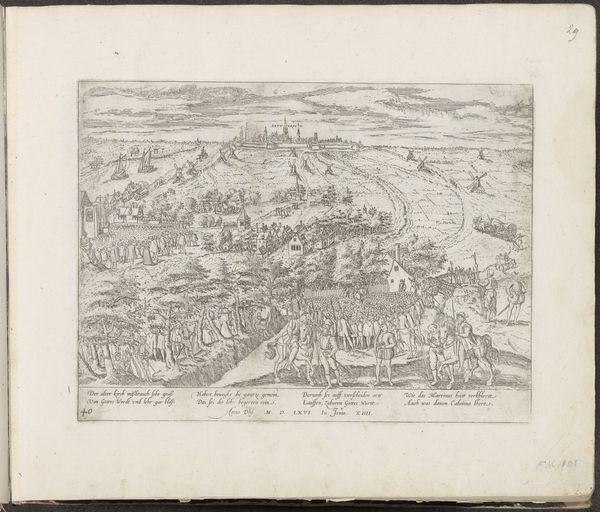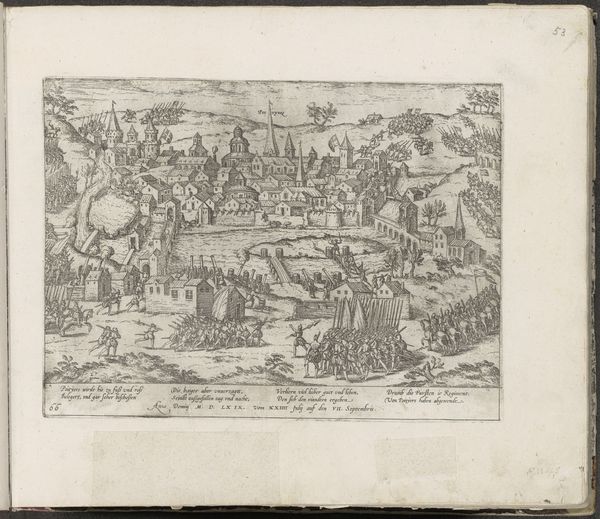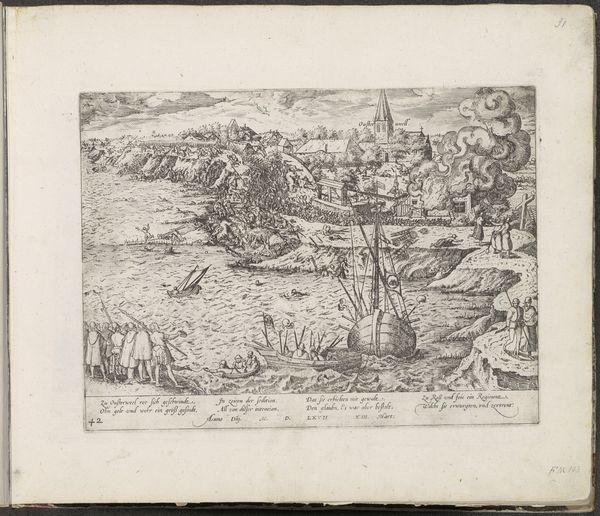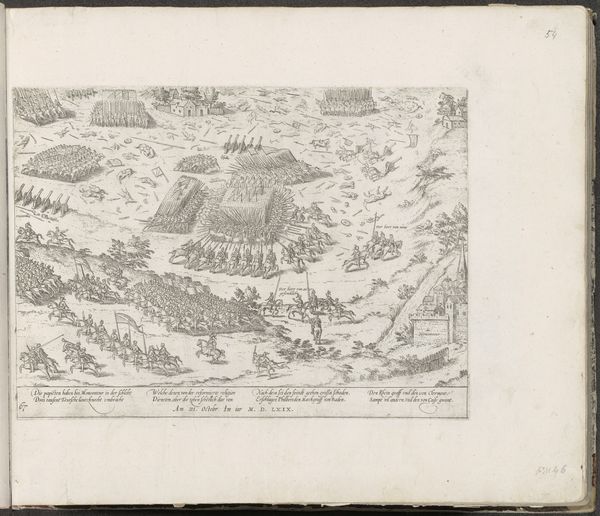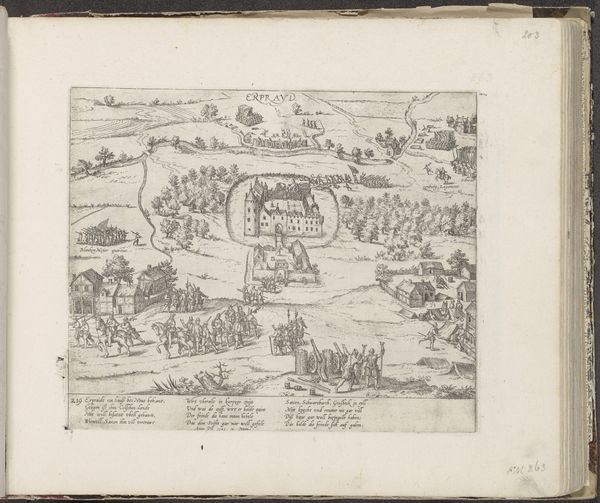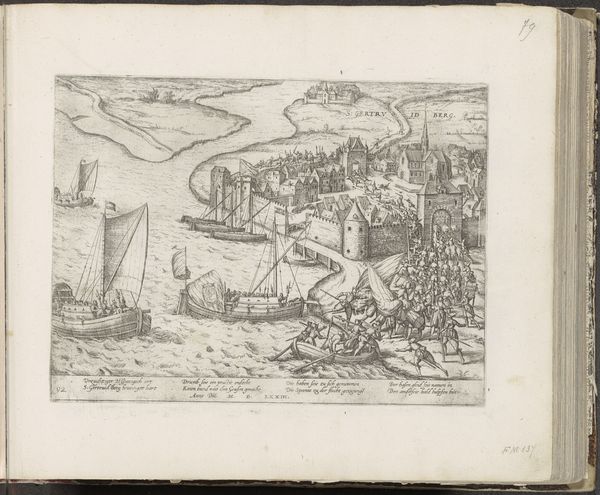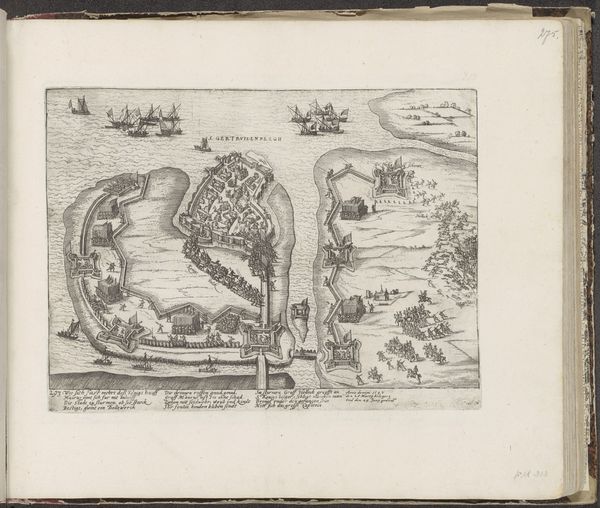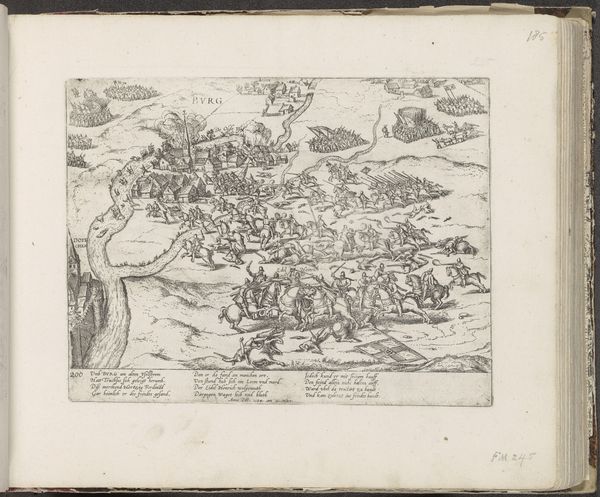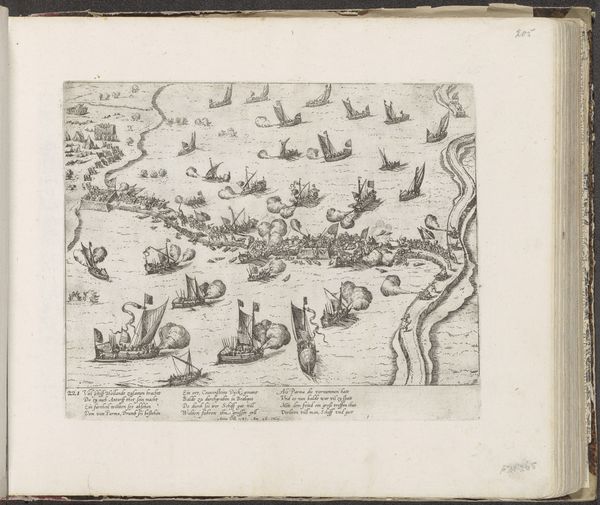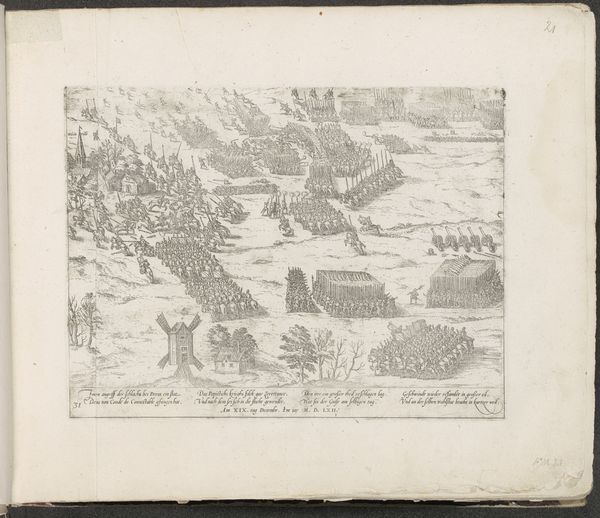
print, intaglio, engraving
# print
#
intaglio
#
landscape
#
history-painting
#
northern-renaissance
#
engraving
Dimensions: height 207 mm, width 282 mm
Copyright: Rijks Museum: Open Domain
Curator: Looking at this print, my eye is immediately drawn to the intense level of detail. There's a whole story unfolding within this relatively small space, captured entirely in these crisp, engraved lines. Editor: Indeed. This is Frans Hogenberg's "Saint-Gilles ontzet door de protestanten, 1562", created sometime between 1567 and 1571. It’s an engraving, an intaglio print, offering us a bird's-eye view of this historical event. The piece resides in the Rijksmuseum. What are your thoughts about Hogenberg’s decision to use this specific medium? Curator: Well, engraving allows for precise, repeatable imagery, perfectly suited for disseminating political narratives during this era of religious conflict. Consider the paper it's printed on. Was it locally sourced? Who was consuming this print, and how did its materiality affect its reception? Was it distributed widely to sway public opinion, or did the cost of materials and production restrict access to a select audience? Editor: That's a fascinating point. I believe this print served a very clear socio-political function. Hogenberg, known for his series of historical prints, captured current events and undoubtedly influenced public perceptions of the religious wars ravaging the Netherlands at the time. Notice how the Protestant forces are depicted – organized, advancing, while others flee? It is no coincidence, certainly not neutral documentation. Curator: Precisely! The strategic placement of figures and the visual narrative he crafts all point to a specific agenda. How are those lines actually etched into the plate? What kind of tools were used? Were they newly developed or part of an established tradition of craftsmanship? Thinking about the labor involved helps me see the artist's deliberate attempt to use accessible medium to record not just the victors, but the very labor necessary to its production and transmission, in accessible visual terms. Editor: I completely agree. Also interesting is that "landscape" choice, but the real subject is military power, civic identity, or national self-definition. In a sense, it provided early audiences with something akin to war reportage through printed imagery that were far from objective or unbiased records. How effective those were and the exact effect the image had is something we have to remember when talking about these prints. Curator: Looking closely at how this image could shape political perspectives or religious sentiments is the biggest question. A medium intended for mass communication, it may have impacted its original target audiences as well as present viewers like us. Editor: It definitely gives one pause. Thinking about these events, their portrayal, the very medium, all filtered through very calculated sociopolitical means.
Comments
No comments
Be the first to comment and join the conversation on the ultimate creative platform.
